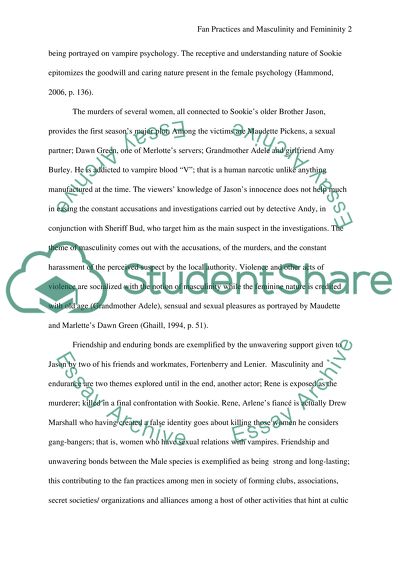Cite this document
(“HOW MIGHT THE FAN PRACTICES THAT PRODUCE A CULT TEXT BE CATEGORIZED AS Essay”, n.d.)
HOW MIGHT THE FAN PRACTICES THAT PRODUCE A CULT TEXT BE CATEGORIZED AS Essay. Retrieved from https://studentshare.org/visual-arts-film-studies/1444549-how-might-the-fan-practices-that-produce-a-cult-text-be-categorized-as-either-masculine-of-feminine-this-according-to-gendered-competencies-and-dispositions-as-found-in-the-american-series-true-blood
HOW MIGHT THE FAN PRACTICES THAT PRODUCE A CULT TEXT BE CATEGORIZED AS Essay. Retrieved from https://studentshare.org/visual-arts-film-studies/1444549-how-might-the-fan-practices-that-produce-a-cult-text-be-categorized-as-either-masculine-of-feminine-this-according-to-gendered-competencies-and-dispositions-as-found-in-the-american-series-true-blood
(HOW MIGHT THE FAN PRACTICES THAT PRODUCE A CULT TEXT BE CATEGORIZED AS Essay)
HOW MIGHT THE FAN PRACTICES THAT PRODUCE A CULT TEXT BE CATEGORIZED AS Essay. https://studentshare.org/visual-arts-film-studies/1444549-how-might-the-fan-practices-that-produce-a-cult-text-be-categorized-as-either-masculine-of-feminine-this-according-to-gendered-competencies-and-dispositions-as-found-in-the-american-series-true-blood.
HOW MIGHT THE FAN PRACTICES THAT PRODUCE A CULT TEXT BE CATEGORIZED AS Essay. https://studentshare.org/visual-arts-film-studies/1444549-how-might-the-fan-practices-that-produce-a-cult-text-be-categorized-as-either-masculine-of-feminine-this-according-to-gendered-competencies-and-dispositions-as-found-in-the-american-series-true-blood.
“HOW MIGHT THE FAN PRACTICES THAT PRODUCE A CULT TEXT BE CATEGORIZED AS Essay”, n.d. https://studentshare.org/visual-arts-film-studies/1444549-how-might-the-fan-practices-that-produce-a-cult-text-be-categorized-as-either-masculine-of-feminine-this-according-to-gendered-competencies-and-dispositions-as-found-in-the-american-series-true-blood.


